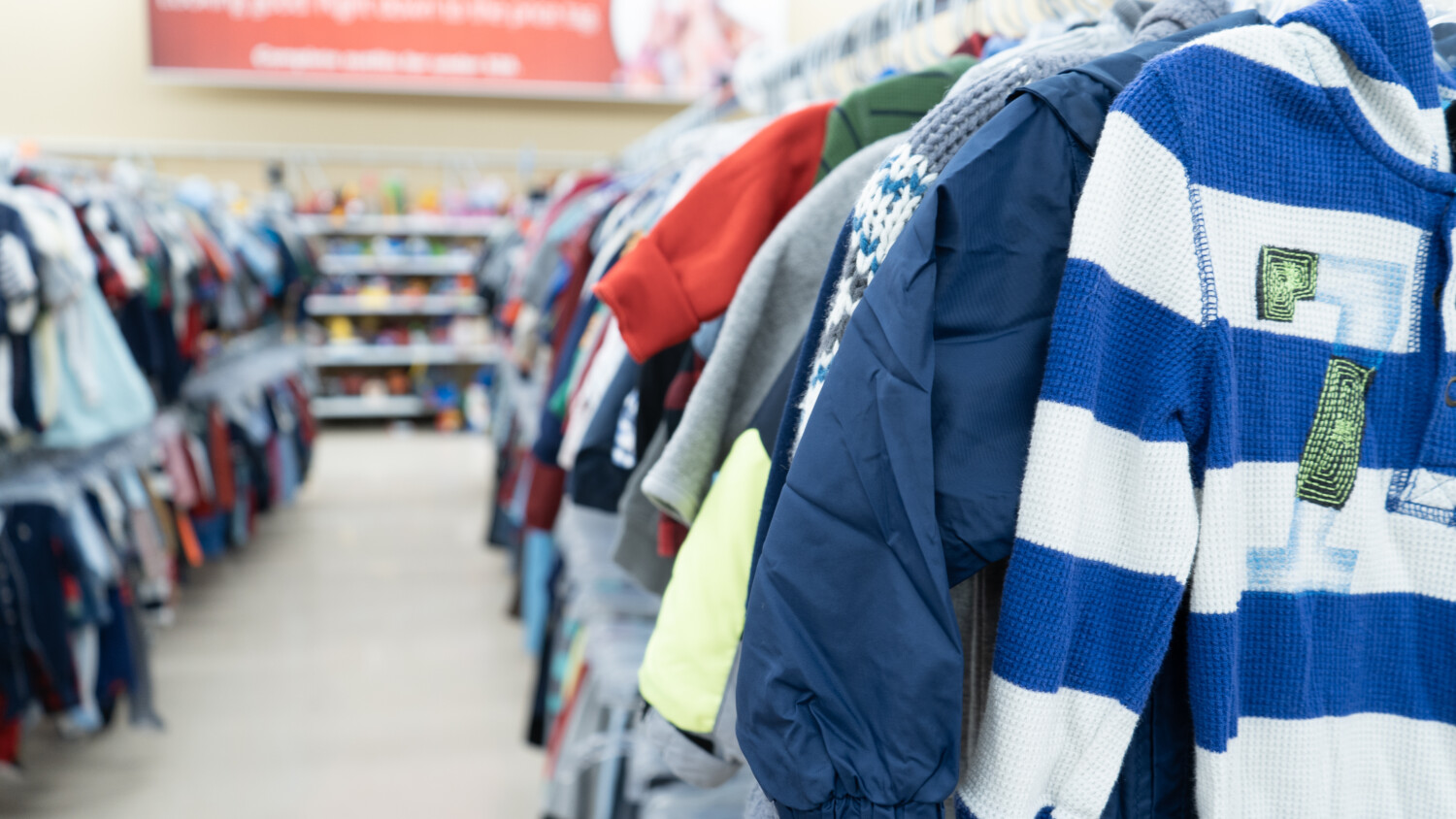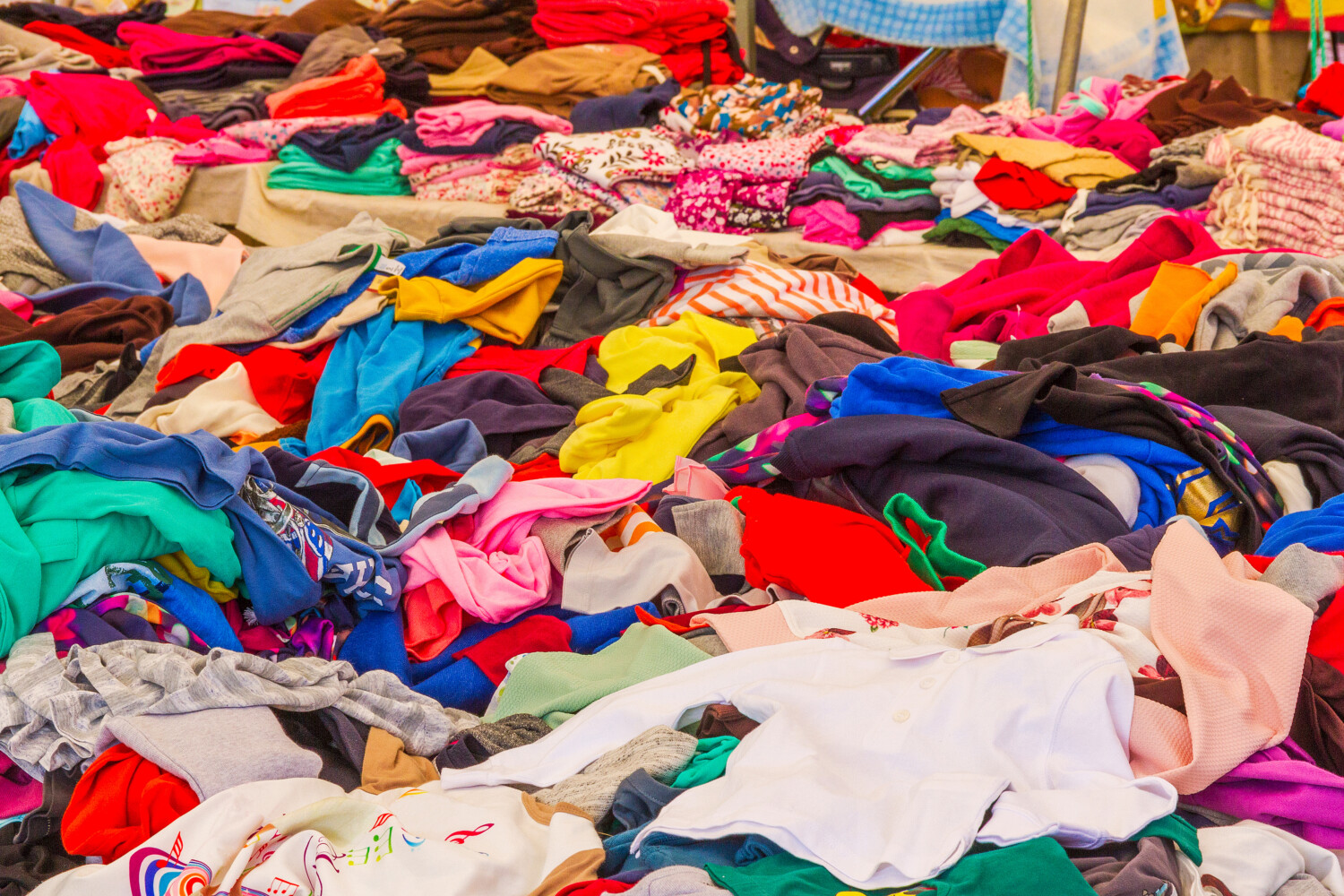Remember those jeans you donated last season when you cleaned out your closet? Have you ever wondered what happens next?
We decided to look into the journey that clothing makes after being donated to Goodwill. It turns out that of all the clothes donated to the organization, only about half are actually suitable enough to be sold in the traditional brick and mortar stores, the Washington Post reports. The other half are then sent to outlet stores, which sell the clothes at a much lower price.
The good news is that Goodwill only throws away clothes that are soiled or wet. In other good news, a large percentage of Goodwill’s revenue is used to fund employment and training programs for the disabled and others facing employment challenges.
To get the inside scoop on the rest of the process, the Post spoke to Goodwill representatives to figure out just where all our clothes actually go. Read on to learn about what they had to say.
First Stop: Goodwill Retail Stores
Workers operating in more than 3,000 stores nationwide go through all of your donated items to make sure they’re usable and nontoxic — not wet or full of mildew. If after four weeks they’re still on the shelf, they’re taken down and go to the next stop in Goodwill’s chain, the outlet stores.

Goodwill Outlet Stores
Like those outlet stores you see along the interstate, Goodwill has their own chain of outlets. Customers are encouraged to buy donated clothes at ridiculously low prices so that Goodwill can keep the clothes out of the landfill. If customers don’t want your clothes for 99 cents, they head to the next destination.
MORE: Is Goodwill becoming more expensive?
Sold To Salvage Buyers
Salvage buyers will buy whatever is left over from the outlets in bulk, and then either re-sell, recycle or export clothes to buyers overseas. Local Goodwills will work directly with salvage buyers since they don’t manage the overseas shipping process. Salvage buyers might not take your clothes, though. In that case, they head to one final destination.

MORE: Thrifter finds $6,200 designer wedding dress at Goodwill for $25
Landfills
Only 5% of donated clothes are sent here, but they contribute to the 17 million tons of U.S. textile waste that end up in municipal waste annually.
Note: Goodwill stores are independently owned and operated and may not follow the exact steps above.
What We Can Do To Keep More Clothing From Ending Up in Landfills
Although almost 95% of all clothing waste could be recycled or reused in some form, a survey says that the average American will throw away 81 pounds of clothing and textile products this year. Here are four tips to help reduce, reuse and recycle.
1. Never Throw Away Your Clothes
Enough said. Consider donating your clothes to Goodwill — they make great use of them and the money raised may help your community. Side note: If you have wet or moldy clothes, talk to your city’s sanitation department about properly disposing of them.
2. Consider Selling Unwanted Items Online
From eBay to Craigslist, there are many online outlets where you can sell clothing, trinkets and knickknacks. One of our favorites happens to be Everything But The House (EBTH). Here, people can sell collections of items (like model cars, Disney collectibles, Precious Moments, rare coins and more) or even an entire house worth of stuff.
EBTH’s trained professionals catalogue, photograph and write descriptions of each item you want to sell. Items go up for auction for seven days. Afterwards, they manage payment, pickup, shipping and delivery, so it’s easy as pie for you.
According to EBTH, sale proceeds are typically three to five times higher than traditional alternatives. If you’re downsizing or decluttering, we definitely recommend checking them out.

3. Make Use of Hand-Me-Downs
My favorite coat growing up was an Iowa Hawkeyes Starter jacket that used to be my older cousin’s. Thanks to my family’s hand-me-down culture, we kept clothes in the family for years, until we finally sent them to donation centers.
4. Be Mindful of Your Shopping Habits
Instead of buying all the clothes you want, buy only the clothes you need. Courtney Carver of minimalist fashion challenge Project 333 limits herself to wearing only 33 different items of clothing every three months. She comes up with enough combinations to avoid wearing the same outfit twice in one week, despite having a limited amount of clothing to choose from.
Cut down on the amount of clothing you buy (and therefore eventually throw away or donate), and you’ll free up space in your closet, your wallet and our landfills. Win, win, win!
MORE: 7 best online thrift stores for second-hand clothes and accessories
Any products or services mentioned above were selected independent of sales and advertising. However, Simplemost may receive a small commission from the purchase of any products or services through an affiliate link to the retailer's website.
This story originally appeared on Simplemost. Check out Simplemost for additional stories.


